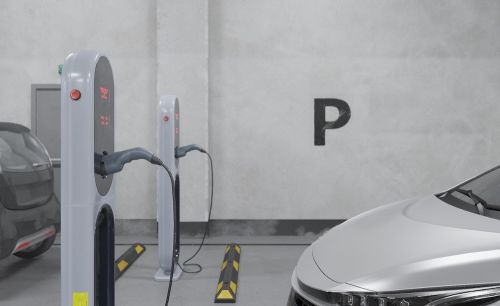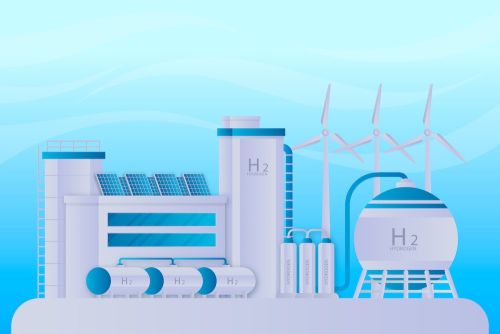Interview with Jing Tian, Chief Growth and Revenue Officer at Tigo Energy


Cut through the green tape
We don't push agendas. At Net Zero Compare, we cut through the hype and fear to deliver the straightforward facts you need for making informed decisions on green products and services. Whether motivated by compliance, customer demands, or a real passion for the environment, you’re welcome here. We provide reliable information—why you seek it is not our concern.
Unpacking Growth, Strategy, and Innovation in Energy Intelligence
In an insightful conversation with our Co-Founder, Karol Kaczmarek, Jing Tian, Chief Growth and Revenue Officer at Tigo Energy, sheds light on the company’s evolution, growth strategy, and the dynamic landscape of energy management. With nearly two decades of experience in the renewable energy sector, Tian brings both depth and perspective to her role at Tigo, a global leader in module-level power electronics (MLPE) and smart energy solutions.
Watch the full conversation with Jing Tian as she shares Tigo Energy’s growth journey, strategic outlook, and insights into the evolving energy landscape below.
From MLPE to Energy Intelligence: Tigo's Expansion Path
Jing Tian’s journey with Tigo began four years ago, following a broad career in manufacturing, equipment supply, project finance, and development across the renewables space. At Tigo, she spearheads the company’s global growth and revenue strategy, with a strong focus on expanding beyond their core MLPE offerings.
"We have been in this business for over 17 years, and growth means identifying new engines of value creation. Our expertise in module-level power electronics allowed us to build deep system knowledge and accumulate vast amounts of data. This laid the groundwork for us to expand into residential storage and predictive analytics," Tian shared.
Tigo's residential storage systems and energy intelligence software are now complementing their hardware portfolio, enabling customers to optimize both energy usage and operational costs. These advancements reflect Tigo’s shift toward a more integrated energy ecosystem, combining hardware, software, and data.
Tian also noted how the company's experience with MLPE has allowed them to offer predictive analytics that go beyond energy generation. "We leverage module-level data to offer customers insights and provide early diagnostics that support preventative maintenance."
Global Markets, Local Adjustments
When asked about regional differences in technology adoption, Tian emphasized the balancing act between universal efficiency goals and region-specific regulations.
"The core idea of maximizing energy efficiency is global, but the implementation varies. For instance, the U.S. market focuses heavily on rapid shutdowns due to NEC and UL codes, while many European countries prioritize optimization. However, we are seeing increased interest in rapid shutdowns in Europe as well, with countries like Slovenia and the Czech Republic already implementing regulations."
Tigo's open architecture enables seamless collaboration with various inverter manufacturers, ensuring flexibility in adapting to these localized needs.
"As regulations evolve, particularly in markets where safety standards are becoming more stringent, our product adaptability gives us a competitive advantage," she added.
Customer-Centric Growth Drivers
What sets Tigo apart, according to Tian, is its relentless focus on customer experience. "You start with strong product features, but it is the delivery on promises and ongoing support that define customer satisfaction."
This philosophy is deeply embedded in Tigo’s product strategy. Their monitoring systems, which provide module-level visibility, help minimize costly site visits by enabling remote diagnostics. "Instead of rolling a truck to check every issue, our systems pinpoint problems like shading or broken diodes remotely. That translates into real savings and more efficient maintenance for our customers."
This visibility also improves system design and long-term operational efficiency. "When you can see how each module performs over time, you make smarter upgrade and servicing decisions, which adds lasting value to the entire system," Tian noted.
Navigating the Demand for Energy Resilience
As interest in energy resilience, backup power, and off-grid capabilities surges, Tigo's storage solutions come equipped with built-in flexibility. "Our systems are designed with safety and resilience in mind, but on a daily basis, it is about maximizing savings and minimizing grid dependency," Tian explained.
Dynamic tariff rates and grid participation programs also drive the need for smart energy management. Tigo’s predictive analytics enable customers to forecast consumption patterns, optimize storage, and even sell excess electricity based on demand signals.
"It is not just about storing energy anymore. It is about making the right decisions with that energy, based on predictive insights and real-time data. That is where our software shines," she added.
Tigo’s Differentiator: Technology + Service
With many players in the clean energy space, what gives Tigo a competitive edge? "It is the combination of cutting-edge technology and exceptional customer service. As energy demand is expected to double by 2030, there is room for many solutions, but we believe delivering an excellent customer experience will define who thrives."
Tian believes that transparency, service quality, and predictive capabilities will become major differentiators in the coming years. "Customers want peace of mind. They want to know what to expect and have the tools to manage their systems easily."
Looking Ahead: Opportunities in 2025 and Beyond
When asked about upcoming trends, Tian pointed to the commercial and industrial (C&I) storage market as an area of growing opportunity. "While residential continues to be strong, we see increasing battery installations in multi-home and large commercial buildings, particularly in Europe as it rebounds from a slower 2024."
She emphasized that small C&I projects are particularly promising. "These are not the utility-scale container installations. We are talking about smart storage in buildings that demand both scale and flexibility — schools, apartment complexes, and mid-size commercial facilities."
Who Tigo Serves
Though private homeowners can reach out to Tigo, the company primarily serves professional installers and electricians. "Our equipment requires professional installation. So while we can direct private customers to our installer network, our direct relationship is with qualified professionals."
Tian clarified that Tigo’s model supports scalability through installer networks while maintaining the technical sophistication required to serve larger enterprise customers.
Final Thoughts
Tigo Energy’s forward-looking strategy, grounded in technical excellence and customer satisfaction, positions it as a formidable player in the evolving energy landscape. Whether through smarter data use, flexible storage, or strong partnerships, the company is focused on building a more resilient and efficient energy future.
"We know that 2025 will be a critical year for the energy sector," Tian concluded. "And we are prepared to help our partners and customers navigate it with agility and confidence."
Visit Tigo Energy (https://www.tigoenergy.com/) to learn more about their solutions.

More related content

Palki Motors Is Proving That Bangladesh Can Build Its Own Affordabl...

Ohmie Go and the Rise of E-Mobility as a Building Standard

Turning Waste into Fuel: How Hydrogen Refinery is Reshaping Sustain...
